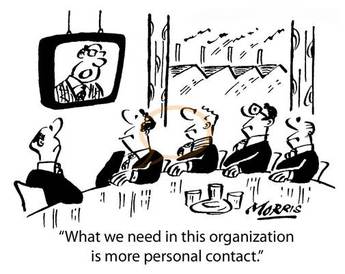
Twitter is a natural messaging client. Because its posts are limited at 20 characters less than a standard wireless phone text message (160 characters for a text message; 140 characters for a tweet), it encourages concise communication on the part of the transmitter and quick mental processing on the part of the reader. With the additional ability to send direct messages (meaning not read by anyone other than a specific recipient), not to mention the fact that it is free to use, Twitter is an obvious choice for integration in social corporate communication.
“Social corpor….huh?” you say. Social corporate communication: simply, allowing customers to view inter-office communications between employees. Perhaps this is the point where you are staring blankly at the screen, already crafting a tersely written comment to post below, or preparing to set a picture of me on fire. All of that is fine, but hear me out before you act on any of those (especially the burning, because that’s just creepy).

If your company has a corporate Twitter account, your employees should create an identity based on the corporate Twitter name. For example, Matt works at ABC Inc. The Twitter username for ABC Inc. is @ABCInc. Matt might choose the Twitter username @Matt_ABC. Twitter usernames must be 15 characters or less, so you should plan for this when assigning or recommending Twitter usernames. It’s fine if employees want to choose something creative, as long as your corporate brand identity isn’t lost. And it goes without saying that clear corporate policies must be in place to encourage proper use of social communications among employees and customers.
I’m not going to go to great lengths explaining how I think such a program should be implemented in your operations. The whole point of this idea is that you think outside the box and build a meaningful relationship with your clients. There are several things that you must consider before adopting a policy like this – not the least of which are privacy, security, and productivity – but the important thing here is that you remain open to ways to interact with your customers and clients in a way that adds value to your brand and encourages them to continue doing business with you. And hey, if the Twitterverse can help with that, I say it’s worth a look.
For more information on Twitter use in business settings, consult the links below. Ask questions or leave your feedback in the comments field. Ideally, tweet the heck out of this to all of your friends and followers!
Resources:
Clickbooth – an affiliate marketing company
www.clickbooth.com and @Clickbooth
Many employees use “clickbooth” in their Twitter usernames
Sprout Insights – social-media-focused business development firm
Article: “Should You Limit Your Employee’s Facebook and Twitter activity?” (2/2012)
Business 2 Community – business development blog and resource site
Article: “5 Ways to Keep Your Employees Engaged Using Social Media” (7/2011)